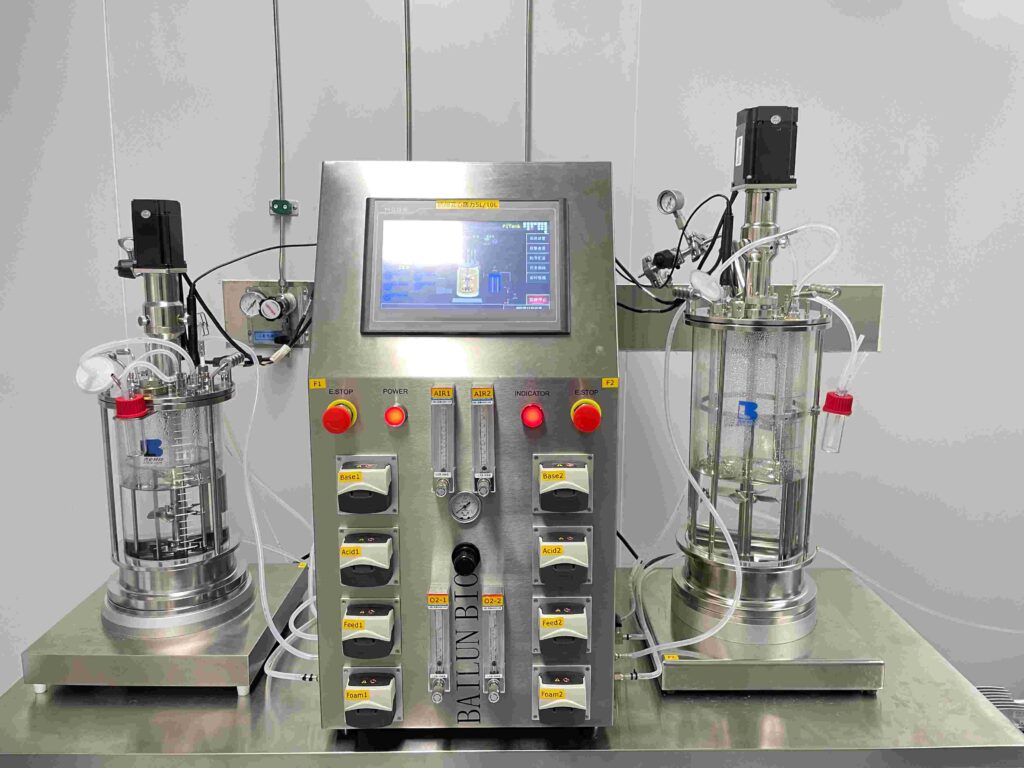
The functions of a lab fermenter 如下:
1.Provide suitable environmental conditions: The lab fermenter can provide constant temperature, pH, oxygen content and other parameters to meet the requirements of different biological reactions. These parameters of benchtop bioreactor have a vital impact on cell growth, metabolite production and other biological processes.
2.Achieve control of biological processes: The lab fermenter can accurately control the progress of biological processes and the generation of products by adjusting parameters such as stirring speed, gas supply rate, and nutrient material concentration. This is of great significance for studying the dynamic changes of biological processes in the laboratory and optimizing product yield and quality.
3.Monitoring and sampling: The lab fermenter is usually equipped with sensors and monitoring equipment to monitor key parameters in biological reactions in real time, such as cell density, metabolite concentration, etc. In addition, the lab fermenter can also perform timed or quantitative sampling for further analysis and evaluation of the reaction.
4.Small-scale production and R&D: lab fermenters are often used in the initial R&D stage of biopharmaceutical production, and can be used for small-scale production and evaluation. The lab fermenters can be used to screen and optimize production strains, culture conditions and process parameters, and provide guidance for subsequent large-scale production.
The lab fermenter is a powerful experimental equipment designed to provide optimized environmental conditions for biological processes and control the reaction process. The lab fermenter is used in biological research, drug production, biofuel production, environmental remediation and other fields. The lab fermenter is one of the important tools for bioprocess and biotechnology research and has broad application prospects.
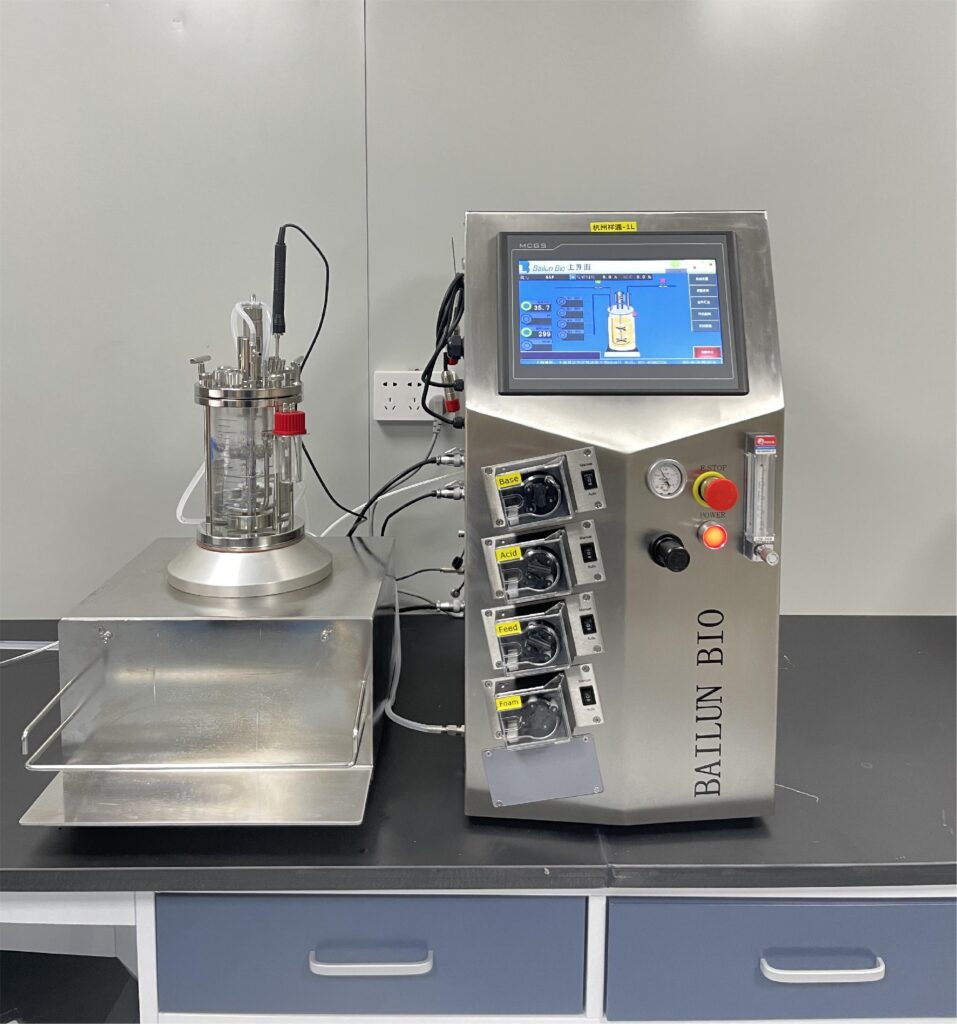
![]()
The main components of a lab fermenter usually include the following:
1.反应容器:又称发酵罐或培养罐,是反应器的主要部分,通常采用透明玻璃或塑料材质制成,方便观察反应过程。反应容器有不同的容积和形状,根据不同的实验需要选择合适的容器大小。
2.Stirring system: A stirring system is installed in the lab fermenter,which produces shear and mixing effects in the reaction materials through a stirring paddle or agitator. This helps to maintain uniform temperature, gas distribution and uniform supply of nutrients, promote cell growth and production of metabolites.
3.Sensors and monitoring devices: lab fermenters are usually equipped with various sensors and monitoring devices for real-time monitoring of key parameters in the reaction process, such as temperature, pH, oxygen content, cell density, metabolite concentration, etc. These devices can provide real-time data of the reaction process, helping researchers understand the reaction dynamics and control the reaction.
4.Control system: The control system of a lab fermenter is usually controlled by a computer or similar instrument, which can adjust and control various parameters in the reactor, such as temperature, pH, stirring speed, gas supply rate, etc. This allows precise regulation of reaction conditions, making the reaction process stable and controllable.
5.Gas supply system: lab fermenter bioreactors usually require an appropriate amount of gas supply, including common air (oxygen), and some special gases such as carbon dioxide can also be used. The gas supply system can ensure that the appropriate amount of gas enters the reactor and maintains convection and uniform gas distribution through components such as gas filters, gas flow controllers and distributors.
6.Temperature control system: lab fermenters require stable temperature control to keep the biological reaction within the appropriate temperature range. The temperature control system usually consists of a temperature sensor and a heater, which can adjust and maintain the temperature inside the reactor according to the reaction requirements.
7.Data recording and control software: lab fermenters are usually connected to a computer or data recorder. Through special data recording and control software, various parameters in the reaction process can be recorded in real time, and data analysis and processing can be performed.
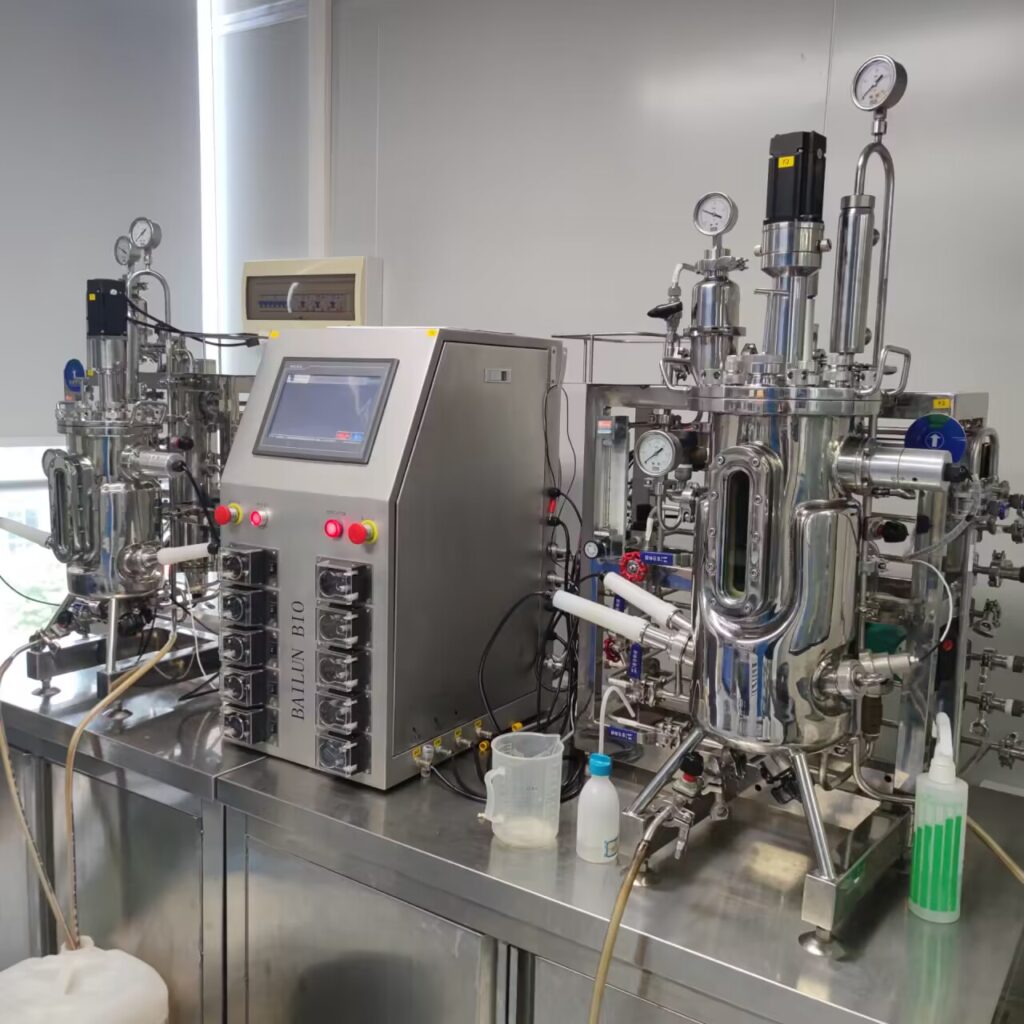
台式生物反应器按照不同的分类标准可以进行分类,主要的分类包括以下两大类:
- 按搅拌方式分类:
Bubble stirring type lab fermenter: A gas inlet device is set at the bottom or side of the reactor. The gas enters the liquid to form bubbles, stir the liquid and provide oxygen supply. This stirring method is simple and low-cost, and is suitable for some biological reactions that require lower wave intensity.
机械搅拌型台式生物反应器:通过电机驱动的搅拌器或搅拌桨对反应液进行搅拌,实现液体的均匀混合和氧气的输送。这种搅拌方式更加灵活可控,适用于对波动强度要求较高、控制精确的生物反应。
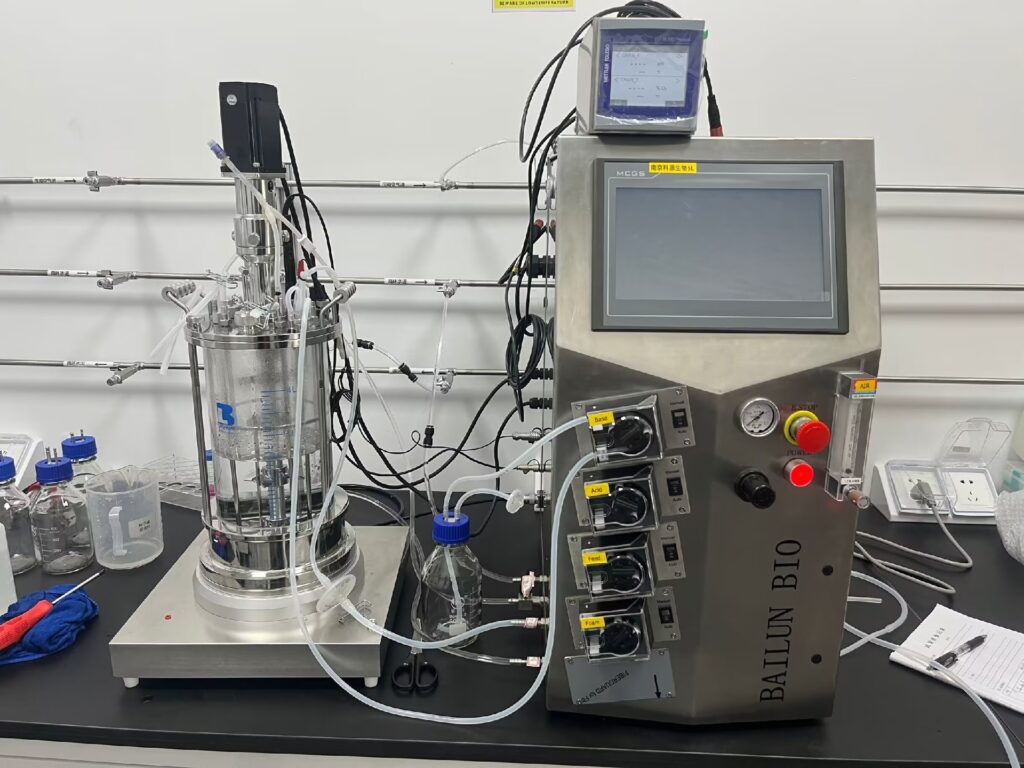
- 按运作方式分类:
离散操作型台式生物反应器:反应器内进行批量反应操作,即在反应器内加入一定量的培养基和生物体,进行一段时间的培养和反应,然后采集样品进行分析。该操作模式常用于小规模的实验研究和初步筛选。
- 连续操作型台式生物反应器:通过连续进料和收集代谢物进行反应操作,反应液在反应器内连续循环,连续供给营养物并收集产生的代谢物,此操作方式常用于大规模生产和连续工艺研究。
此外,根据具体应用领域和需求的不同,台式生物反应器还可以按照功能和尺寸进一步细分分类。例如针对具体的细胞培养或发酵应用,还可以分为细胞培养反应器、发酵反应器、植物组织培养反应器等。
Lab fermenter 具有以下优点:
- 操作维护方便:与大型工业反应器相比,台式生物反应器通常体积较小,操作简便,更容易控制和调整反应条件,清洗维护也相对方便,减少了操作人员的工作量。
- 生物过程控制性能好:台式生物反应器配备传感器和监测装置,可实时监测反应过程中的关键参数,并通过控制系统调节和维持目标条件,实现对生物过程的精准控制,有助于优化生物产品生成的效率和质量,为后续工艺改造提供可靠数据。
- 成本更低、占地面积更小:与大型工业反应器相比,台式生物反应器的制造和运行成本更低。另外,由于体积小,所需的实验室或生产车间空间要求也较小,减少了设备布局和资源投入的压力。
台式生物反应器虽然具有诸多优点,但也存在一些局限性:
- 反应规模受限:由于台式生物反应器体积较小,反应物料量和可承载的细胞数量有限,主要适用于生物过程的小规模实验和研究阶段,无法满足大规模工业生产的需求。
- 难以实现规模化生产:台式生物反应器的规模化生产存在一定的技术难度,在放大过程中需要考虑反应器内液体的搅拌、传质、传热等因素的变化,以保持反应条件的一致性和转化效率的稳定性。
- 传质限制:由于台式生物反应器的体积限制,液体内部的传质效果有限,可能导致氧气或其他气体供应不足,影响细胞生长和产物生成。因此,在设计台式生物反应器时需要优化传质性能,以提高反应效率和产品质量。
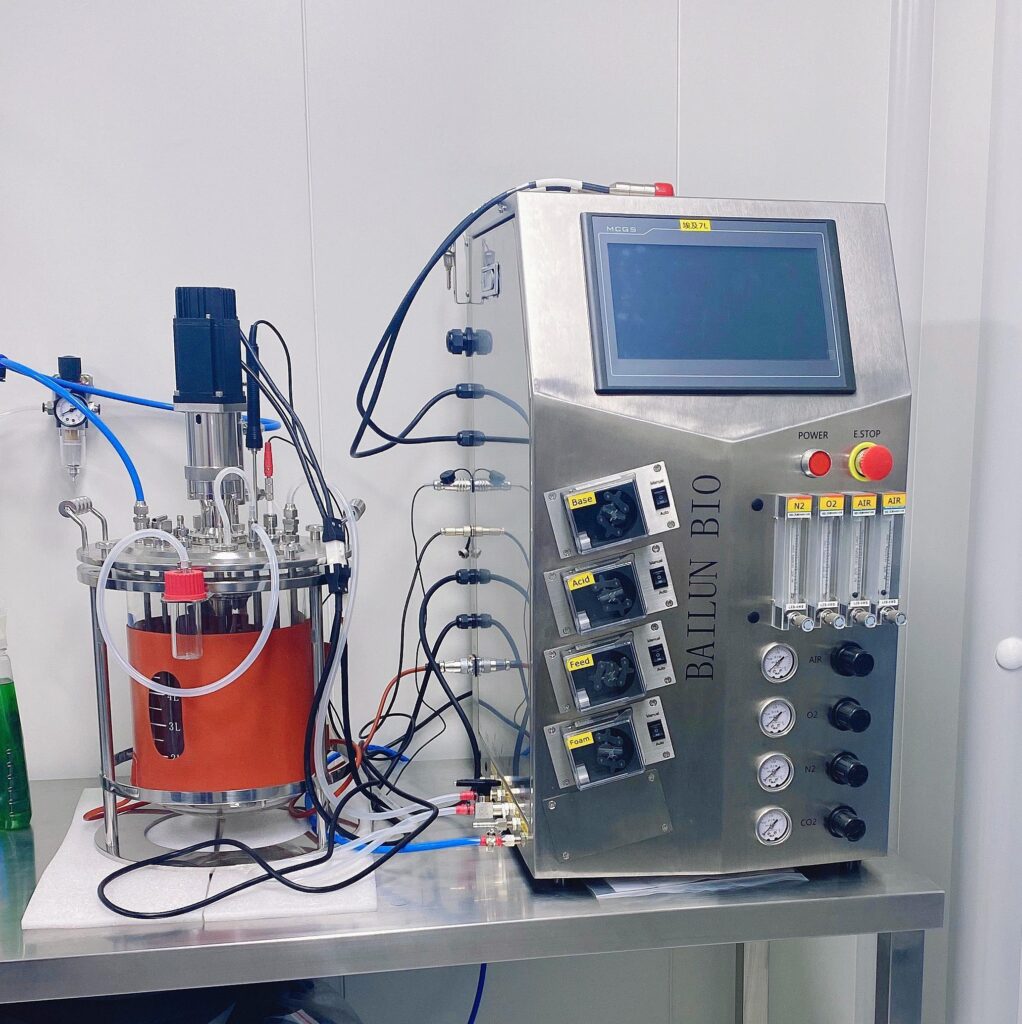
虽然台式生物反应器存在一些局限性,但对于实验室规模研究和初步生产规模而言,它仍然是一个非常有用的工具和设备。对于小规模向大规模生物过程的转化,可以通过合理的工程设计和实验验证来解决这些局限性,并将台式生物反应器的研究成果和经验应用于大规模工业生产。
台式生物反应器广泛应用于各个领域,下面详细介绍其应用:
生物制药生产:台式生物反应器在生物制药制造过程中发挥着重要作用。生物制药是一种利用生物反应器中的生物体生产药物或治疗剂的方法。常见的生物制药包括蛋白质药物、抗体药物和基因治疗药物。台式生物反应器提供了一个控制和优化生物反应过程的环境,确保药物的高产量和质量。
生物燃料生产:台式生物反应器用于生产生物燃料,包括生物气(如沼气、氢气)、生物乙醇、生物柴油等。生物燃料的生产利用微生物的发酵和代谢能力,将有机废物或植物材料转化为可再生能源。
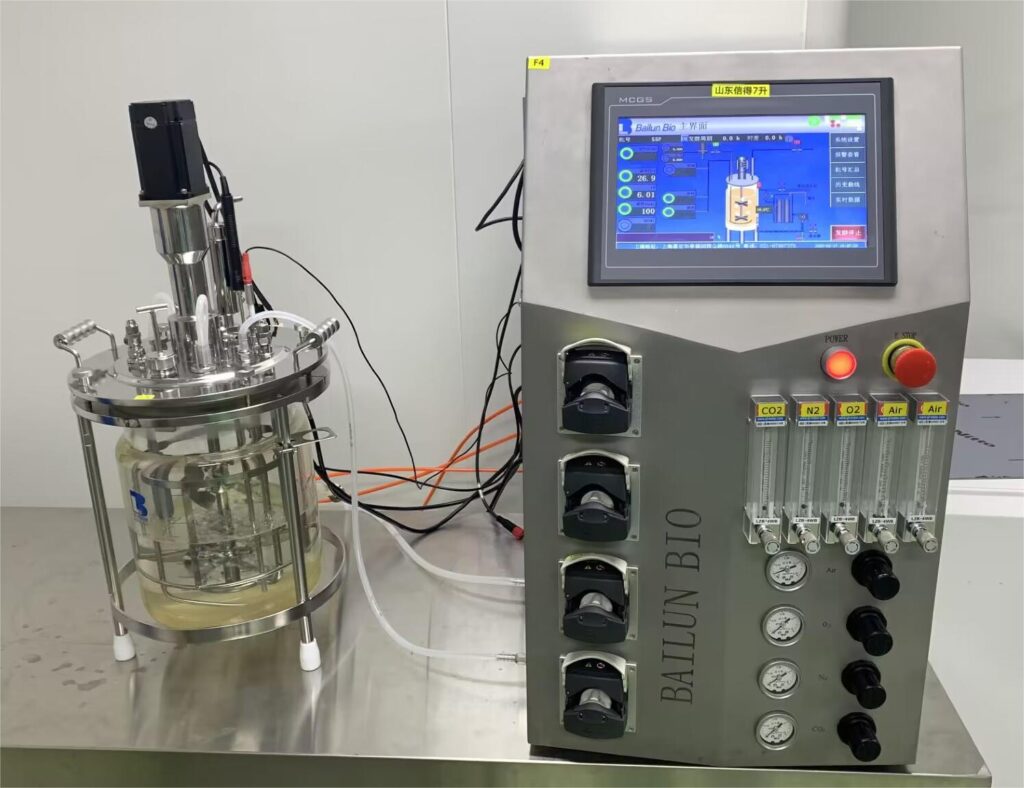
环境修复与废弃物处理:台式生物反应器在环境修复与废弃物处理中发挥着关键作用。例如,台式生物反应器可用于水处理,将重金属、有机化合物等有害物质转化为无害物质。此外,台式生物反应器还可用于土壤修复,通过细菌或真菌的作用分解有害物质,改善土壤质量。
生物材料和生物化学品生产:台式生物反应器用于生产生物材料和生物化学品。例如,台式生物反应器中的微生物用于合成生物塑料和可生物降解材料等聚合物。此外,台式生物反应器还用于生产食品添加剂、酶、氨基酸和其他生物化学品。
台式生物反应器在各个领域的应用还在不断拓展和创新,随着技术的进步和可持续发展及环境保护的要求,台式生物反应器的应用前景将更加广阔和富有前景。
